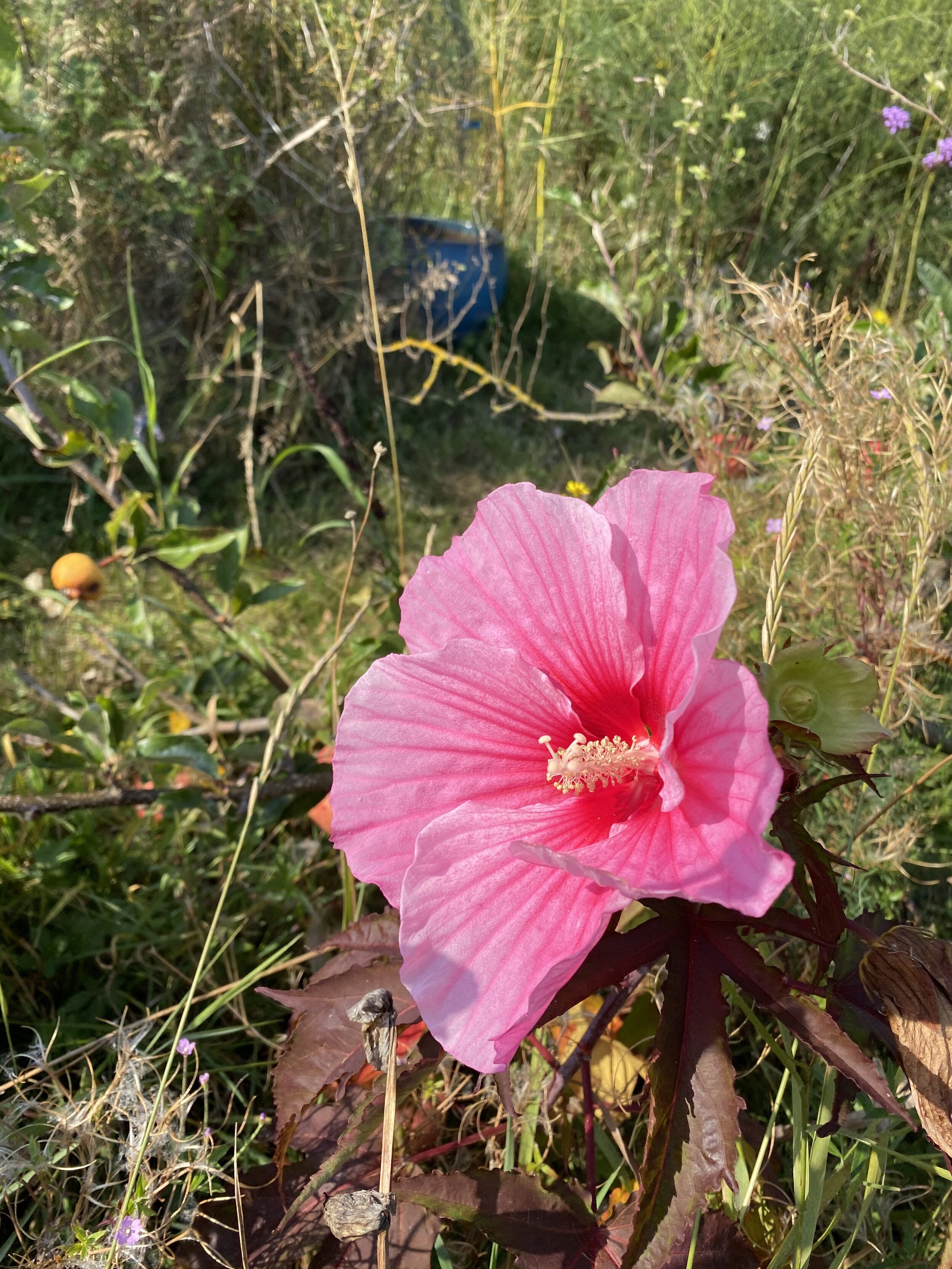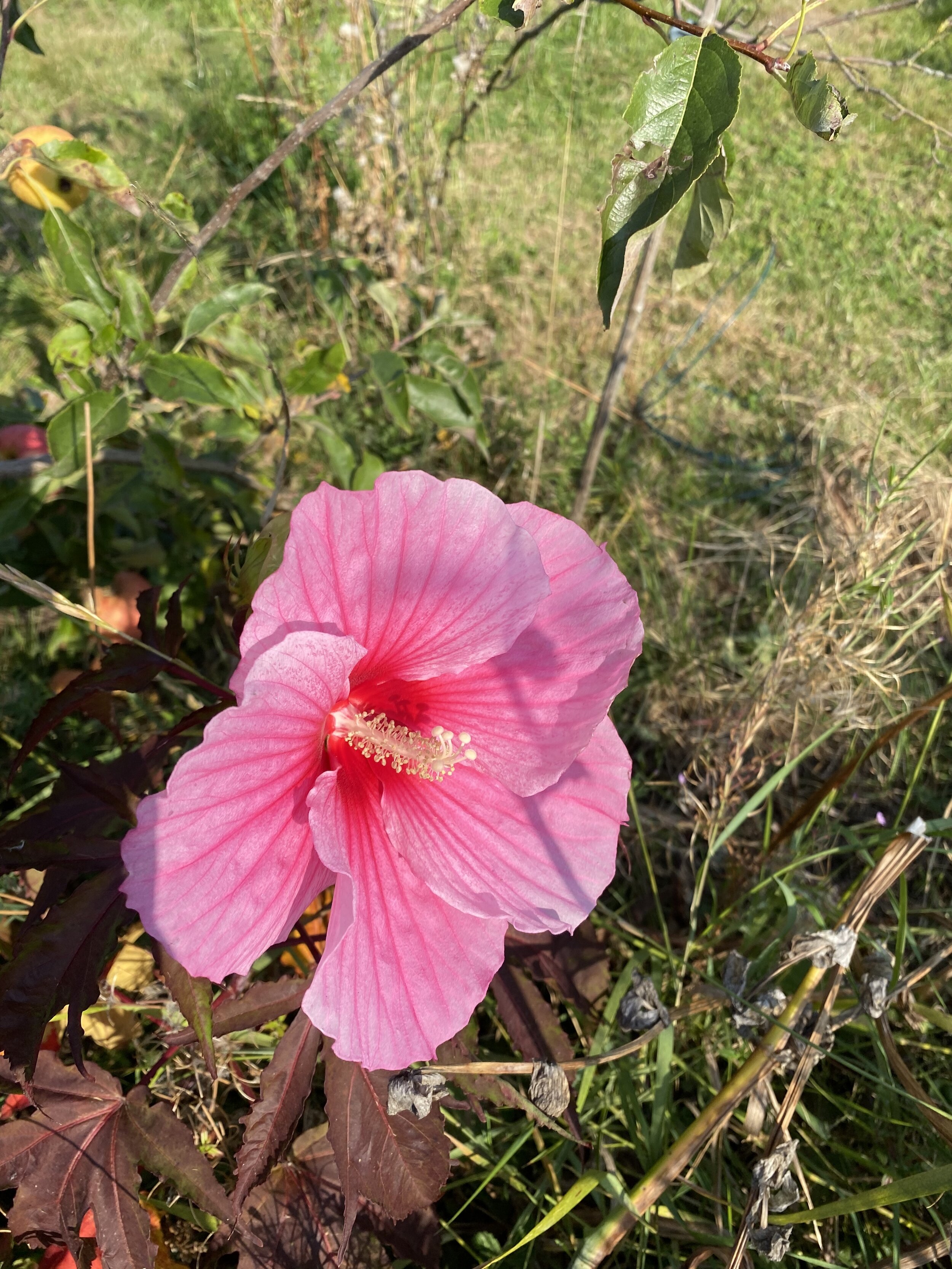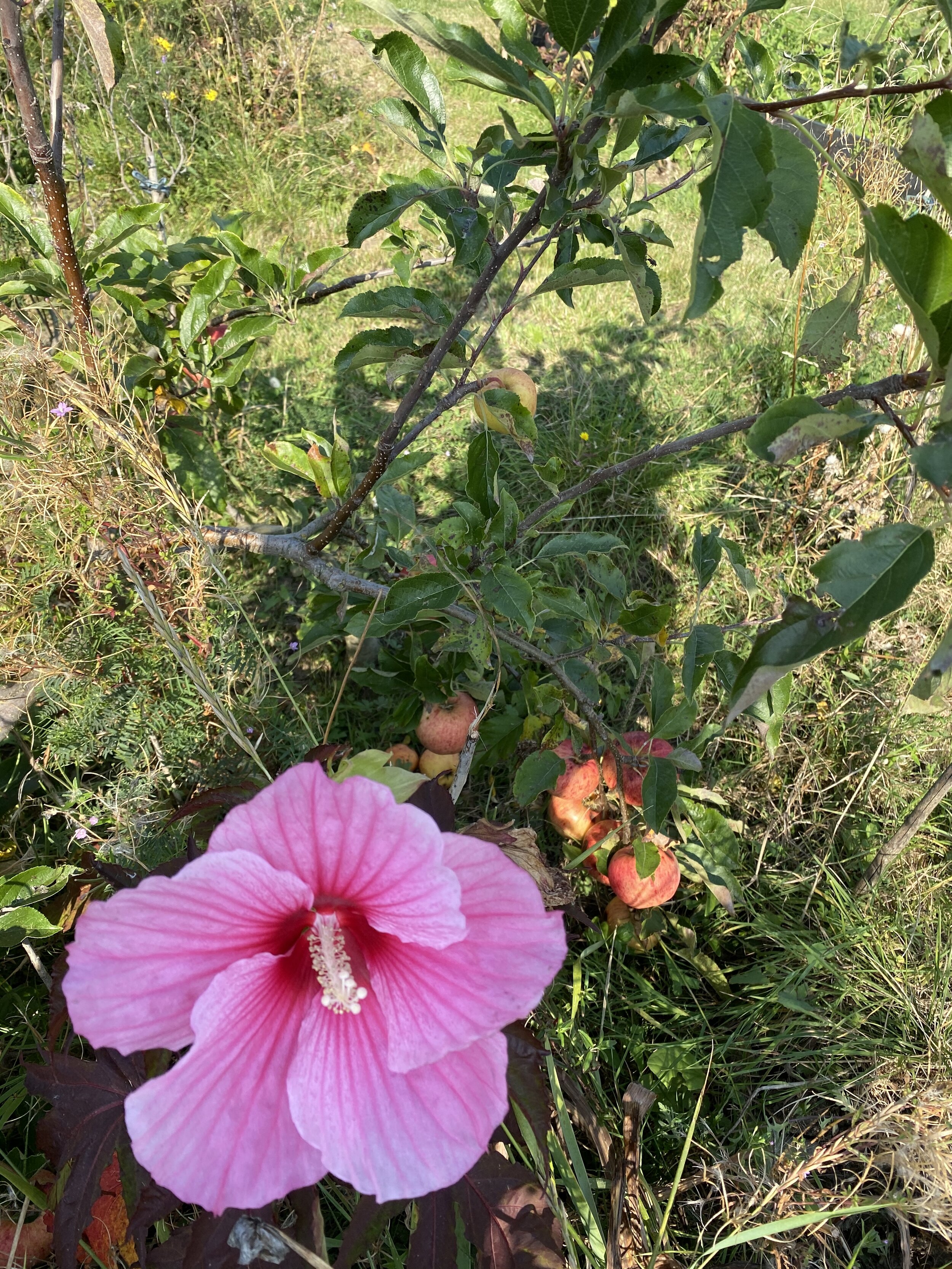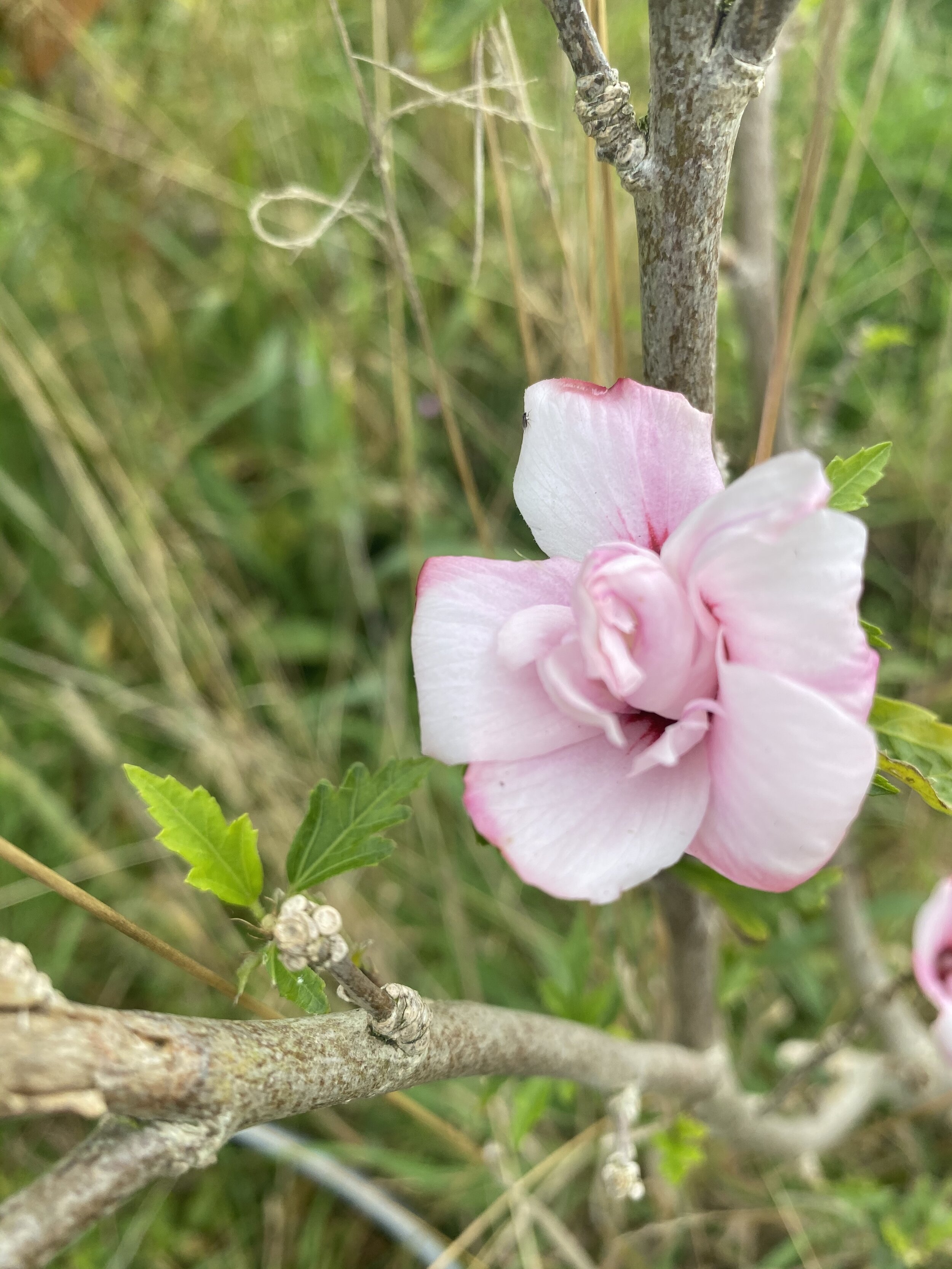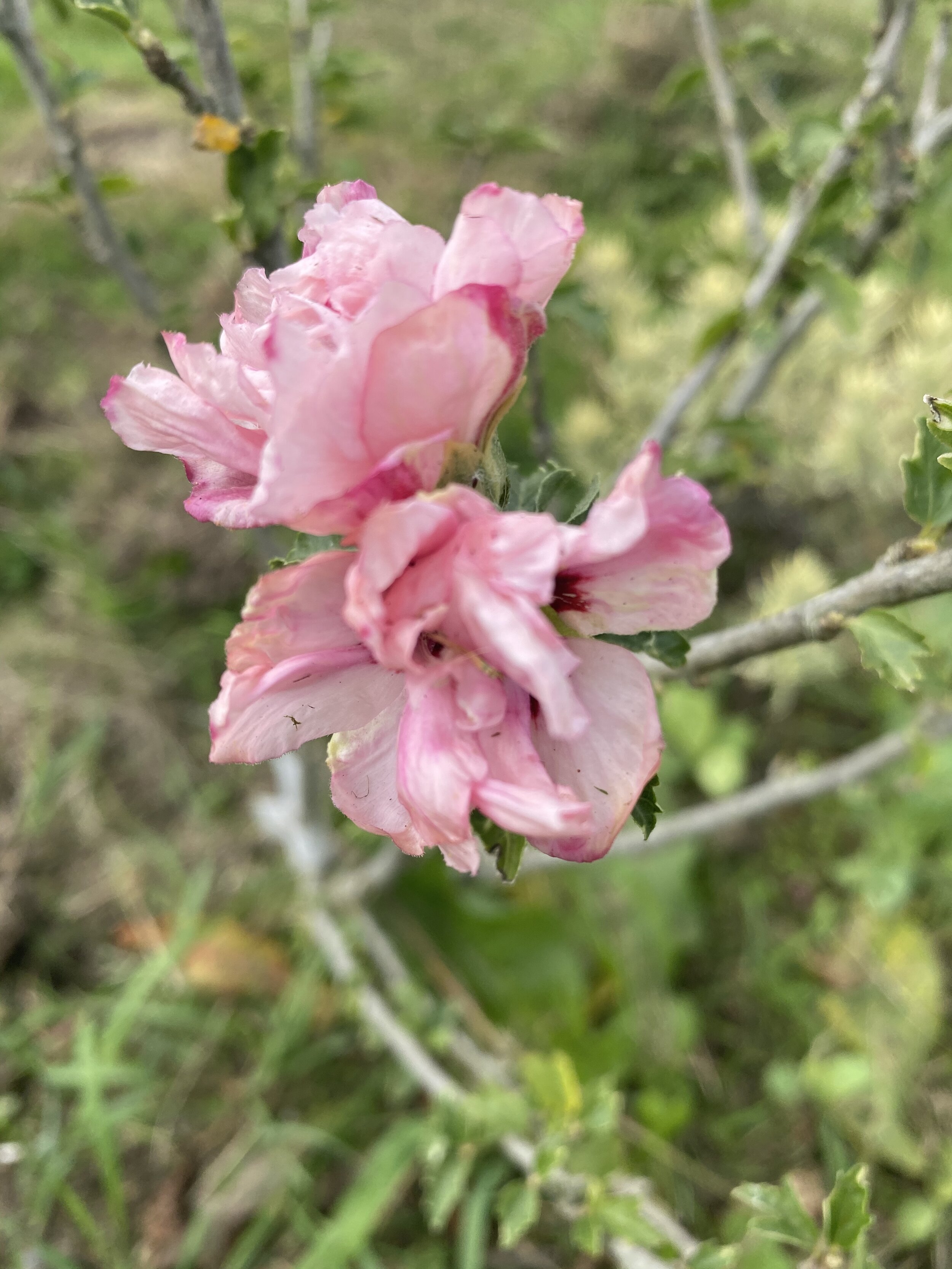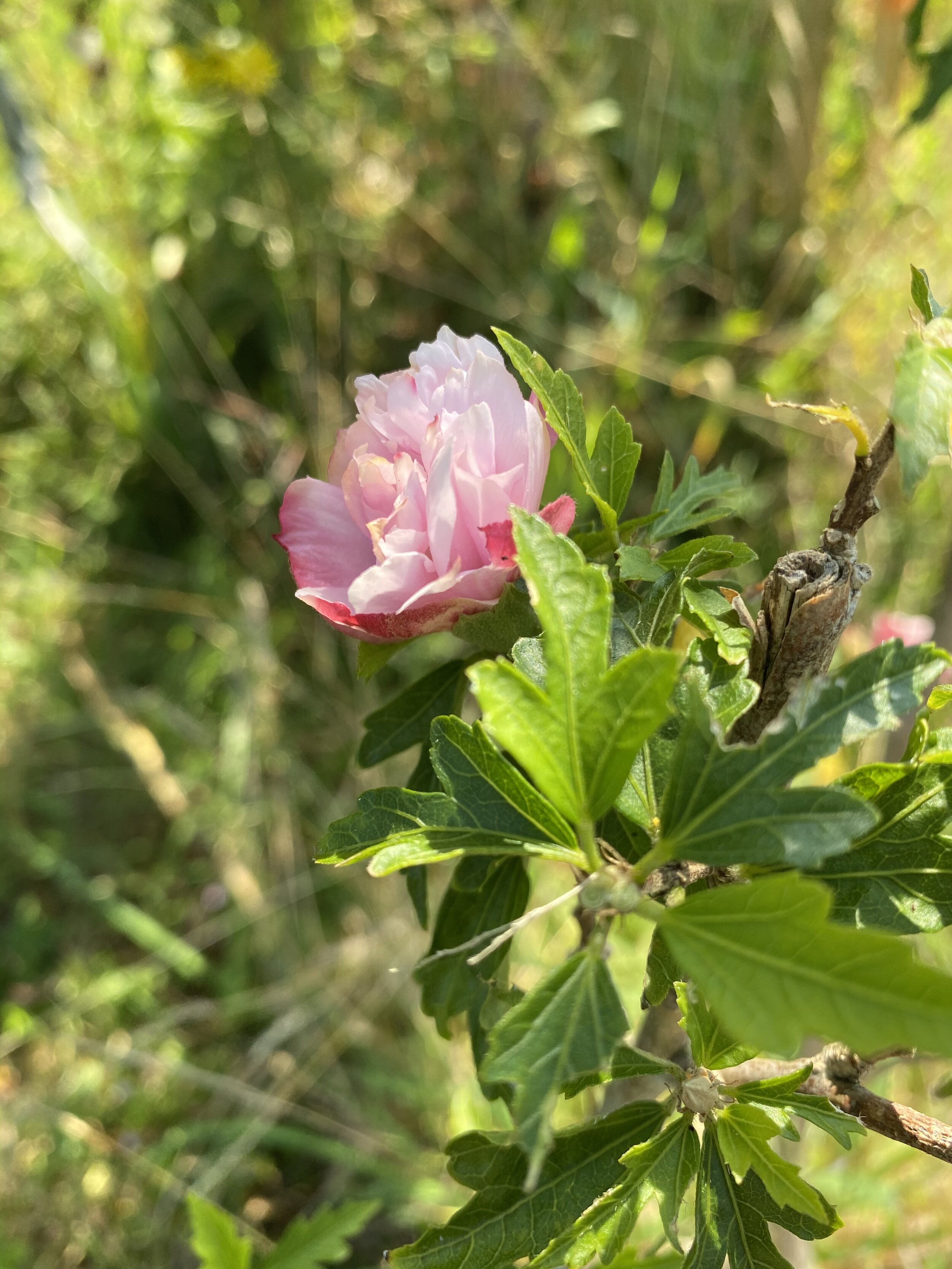Hibiscus flowers ... but not quite as I used to know them
Mid to late summer is the time for hibiscus blooms outdoors in the UK.
I was born in London but I spent many sun-kissed childhood years growing up in the tropics — tropical storms and hurricanes aside, of course. In many tropical countries, the large and luscious hibiscus flower is pretty much king. I can honestly say that in every home we lived in during those times, there was always at least one hibiscus shrub in the garden. If there wasn’t one there when we moved in, my mother would definitely plant one — or many! Cardinal red and pink were popular colours, but there were whites, yellows, oranges and salmons too. The scientific name of this tropical hibiscus is Hibiscus rosa-sinensis, a member of the mallow or Malvaceae family. Hibiscus rosa-sinensis is a tender, vigorous, evergreen, woody perennial with a bushy habit. Leaves are lush and shiny dark green. Flowers are large (up to 18cm in width) and trumpet-shaped, with five petals and a prominent projectile stamen.
A large group of hibiscus species are native to the Asia, Indian Ocean islands, Australia, the South Pacific, and Hawaii. It is believed that new hybrids and varieties formed over thousands of years as people carried the plants with them as they migrated throughout the zone. A double red form of Hibiscus rosa-sinensis from China was named by Carl Linnaeus in 1753 in his Species Plantarum. However, even that early specimen was a cultivated hybrid. In modern times, many hibiscus hybrids have been, and are still being created in Florida, California, Hawaii, and Australia, often by hobby growers who may be members of the American Hibiscus Society or its overseas affiliates. These new varieties come in different shades and combinations of colours. Hibiscus rosa-sinensis is the national flower of Haiti, the Solomon Islands and Niue.
This brilliant red Hibiscus rosa-sinensis flower brings back childhood memories!
The tropical Hibiscus rosa-sinensis
Photo attribution: By Robert F. Tobler - Own work, CC BY-SA 4.0, https://commons.wikimedia.org/w/index.php?curid=47512036
Some common names for the tender tropical Hibiscus rosa-sinensis plant are Chinese hibiscus, rose of China, Hawaiian hibiscus, rose mallow and shoe black.
‘‘I particularly remember the ‘shoe black’ name that I learned of in Jamaica. Polishing our school shoes every Sunday and lining them up for the start of a new school week was a regular weekend chore in our house when I was growing up. I remember foregoing the tinned black ‘Kiwi’ shoe polish on one occasion for crushed hibiscus flowers. The process was a bit messy but it worked quite well! I had shiny black shoes!
I also remember wearing tropical Hibiscus flowers in my hair, another common cultural practice in countries like Jamaica and Hawaii.’’
The tender tropical Hibiscus rosa-sinensis of my youth is available in the UK, normally sold as an indoor plant, flowering in late summer and the autumn. They couldn’t survive the UK winter outside. The plants I grow outside on my plots are quite different in leaf and flower form. Five are varieties of the species Hibiscus syriacus and one is a Hibiscus moscheutos, both of the same Malvaceae family.
These hibiscus flowers are not quite like the ones I used to know, in leaf form and flower …
Hibiscus moscheutos is a tall, deciduous perennial, that is woody at the base. Flowers are a shallower trumpet shape than Hibiscus rosa-sinensis, and the stamens shorter. Flowers are also larger, up to 20cm in width. Hibiscus moscheutos is native to southern and eastern parts of North America. Common names are common rose mallow and purple marsh rose mallow. This plant is hardy to -15C. It also grows best in full sun in moist or poorly drained soil in a sheltered position. I’ve had my plant for 5 years now and it’s woody stem is no more that 15cm tall. I’m not sure whether it is a dwarf (I’ve lost the label) , but the herbaceous branches have never extended beyond 30cm, and they die back each winter. Hmmm … Notwithstanding, I did get a few large beautifully-vibrant, pink, funnel-shaped blooms this year. My plant’s broad purple leaves have toothed edges and hairs on the underside.
Look!
My five other plants are of the species Hibiscus syriacus. Hibiscus syriacus is native to south-central and southeast China. ‘Syriacus’ because it had been collected from gardens in Syria. Common names include the Korean rose, rose of Sharon and Syrian ketmia. It is the national flower of South Korea and Malaysia.
Hibiscus syriacus is a deciduous woody perennial with a bushy habit. This species grows well in a moist but well-drained soil in a sheltered position in full sun in a sheltered position. It is hardy to -10C. Flowers may be single or double, and up to 8cm in width, in colours of white, violet, pink and red, or various combinations and shades of those colours. Stamens are shorter than those of Hibiscus rosa-sinensis, and may be obscured in some double forms. Ovate, palmately veined leaves appear in late spring, pale at first, then darkening to mid green.
I’m afraid to say that only a couple of my Hibiscus syriacus plants are growing well at the moment. Blooming was particularly poor this year. I’m not sure why. I think they need a little more TLC. Two have become ridden with lichen. I’ve read that lichen do not affect host plants negatively, and are even a sign of plant health, but I’m not so sure. I get the impression that, at least until well established, it doesn’t do brilliantly if there is a lot of competition from grass and weeds.
Despite their obvious growth challenges, my Hibiscus syriacus plants managed to produce a few small flowers like these:
Blooming for my Hibiscus syriacus and Hibiscus moscheutus plants is over now. I will focus on weeding around them and getting them ready for the winter by mulching. I will pay more attention to their care next year in the hope of stronger growth. I live in hope.



